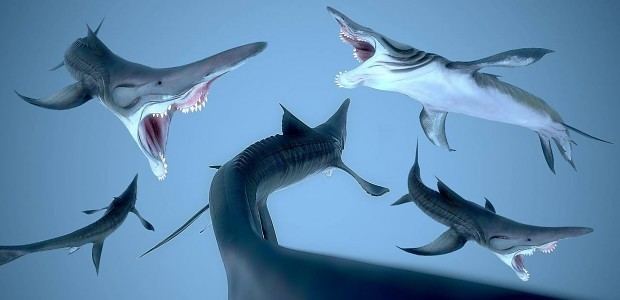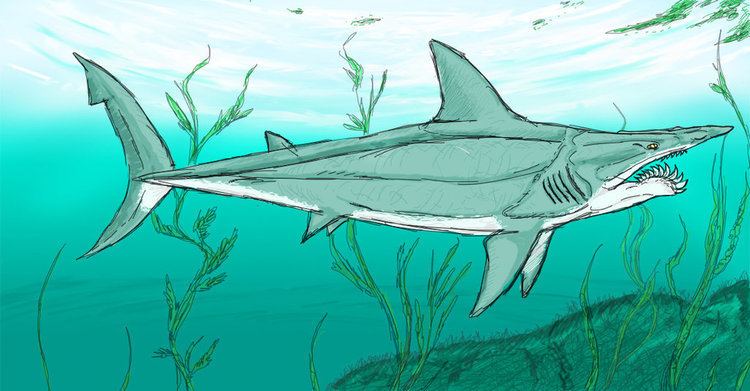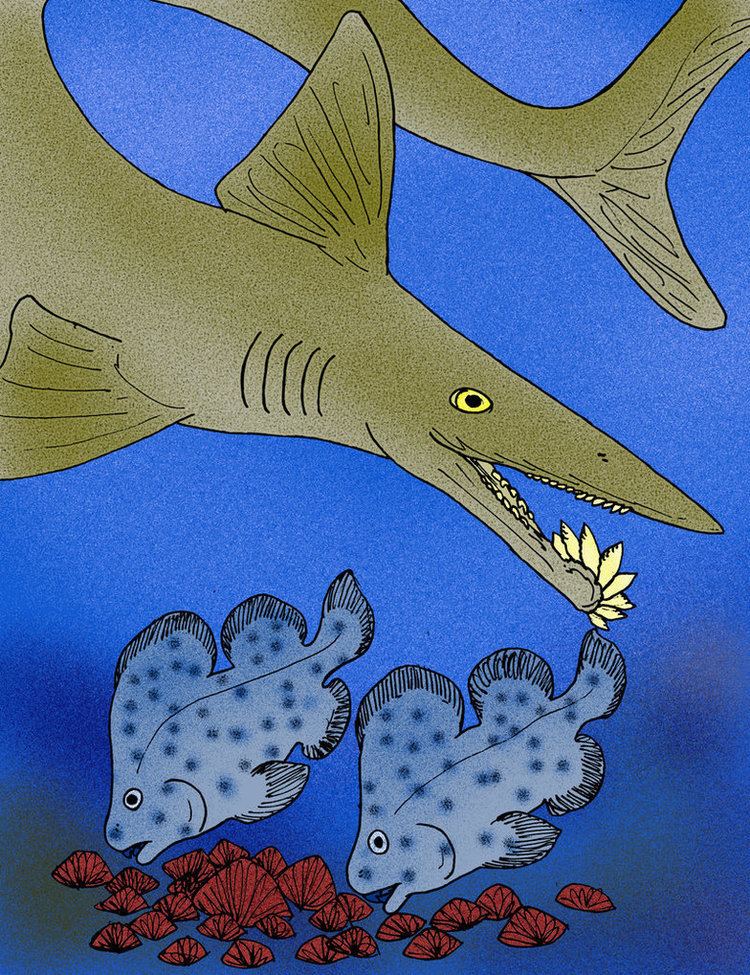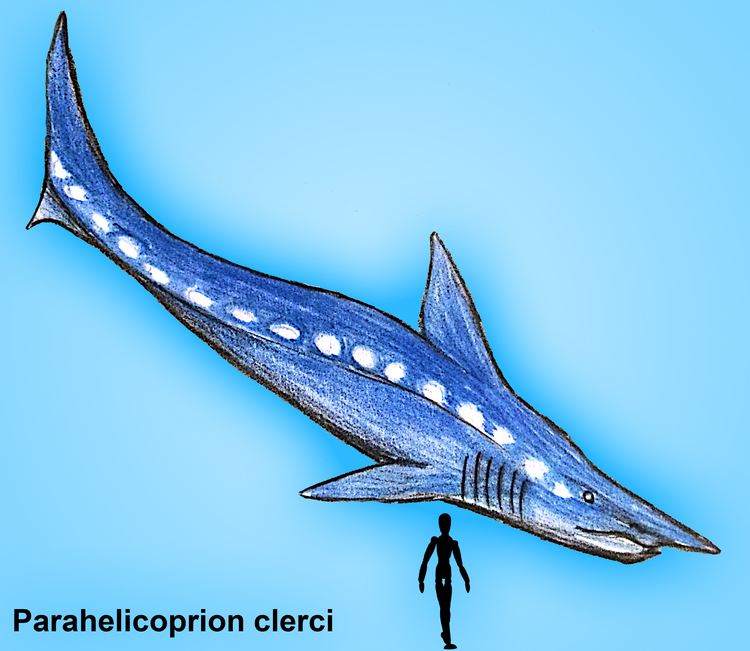Phylum Chordata Rank Genus | ||
Similar Sarcoprion, Eugeneodontida, Fadenia, Listracanthus, Helicoprion | ||
Parahelicoprion is an extinct genus of shark-like eugeneodontid holocephalids from the Permian of the Ural Mountains and South America. The genus name, from "nearly coiled saw" in Greek, directly refers to Helicoprion, a related holocephalid that shares similar traits to it, including the helical whorl of teeth.
Contents

Description

One of the primary qualities that separate Parahelicoprion from Helicoprion is the shape, thickness, and angle of the tooth whorl. Its teeth protrude outwards not like a tightly coiled saw, but instead a curved arrangement of cutting blades indicating it relied less on crushing slow-moving invertebrates and catching squid and other small mollusk prey, but inflicting traumatic damage against more durable, faster prey. Their teeth grew at a much slower pace than those of other whorl-tooth sharks, resulting in a depreciated spiral, growing only half of the teeth a Helicoprion would grow in its lifetime. The tooth spiral also was able to indicate the age of the eugeneodontidans in question.

Parahelocoprion is estimated to have grown to lengths of around 12 m. It was once thought to be the largest of its family; in 2013, however, a tooth whorl of a large Helicoprion was described, indicating that the genus could grow to larger sizes. The fossils of Parahelicoprion indicate an animal that was overall more slender and less heavy than Helicoprion despite being comparably sized.

Parahelicoprion was once believed to reach lengths up to 30 m, but this was based on eel proportions instead of the classic, shark-like look of eugeneodonts. The figure was later discarded.
Paleobiology

Parahelicoprion is thought to have been a nektonic carnivore that probably preyed upon a variety of different species, using its blade-like teeth to cut at exposed flesh like a hatchet or wedge.

